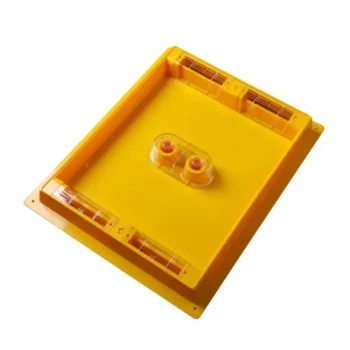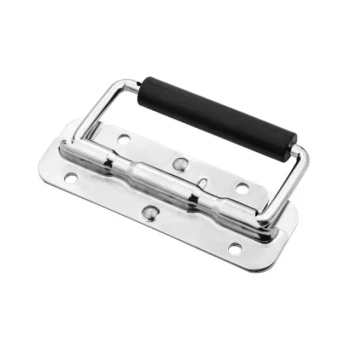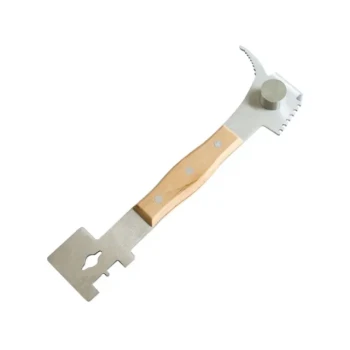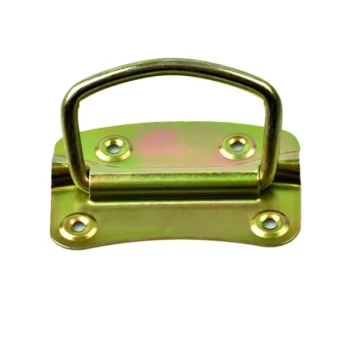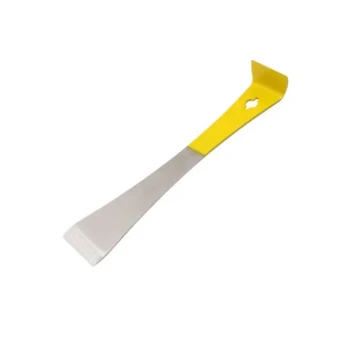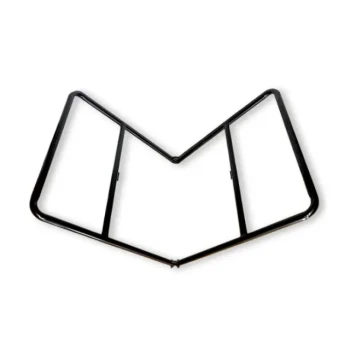In short, beehives have metal roofs for superior durability and waterproofing. This metal cladding acts as an impenetrable shield against rain, snow, and sun, protecting the wooden hive components from rot and degradation. It ensures the colony remains dry and secure, which is paramount for its survival and productivity.
The use of a metal roof on a beehive is not merely a preference; it is a strategic choice for long-term hive health. It provides a low-maintenance, highly durable barrier that defends the colony against its greatest external threat: moisture.
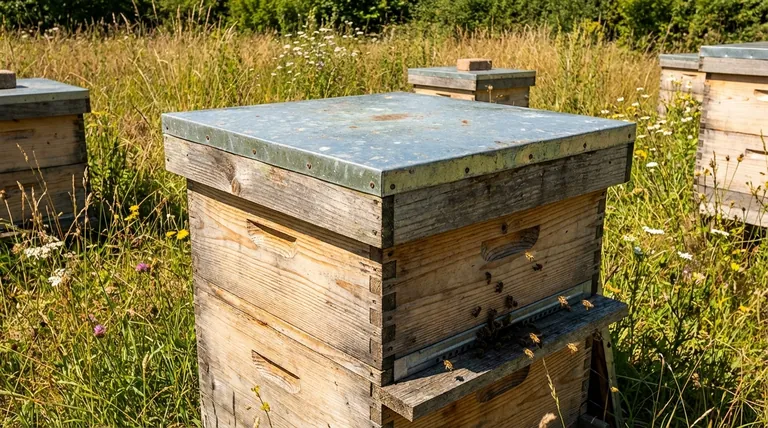
The Primary Function: Absolute Weatherproofing
The single most important job of a hive roof, or outer cover, is to keep the inside of the hive dry. Metal is the ideal material for this task for several key reasons.
Shedding Water and Snow
A solid metal sheet is completely impervious to water. Rain and melting snow run off immediately, preventing any moisture from seeping into the wooden parts of the hive below. A wet colony is a stressed and often doomed colony.
Preventing Wood Rot
The main body of a beehive is made of wood. If the roof were simply painted wood, it would require constant maintenance to prevent water from soaking in. Saturated wood quickly leads to rot and decay, compromising the structural integrity of the hive and creating an unhealthy environment for the bees.
Blocking UV Degradation
Direct sunlight, specifically its ultraviolet (UV) rays, breaks down the fibers in wood over time, causing it to become brittle and weak. A metal cover provides a physical block against this constant solar assault, dramatically extending the life of the wooden components it protects.
Beyond Weather: The Practical Advantages
While weatherproofing is the main goal, metal-clad roofs offer several other practical benefits that have made them the industry standard.
Unmatched Durability
A metal roof is exceptionally tough. It can withstand impacts from falling branches, hail, and the wear and tear of being handled by beekeepers. This resilience ensures the hive remains secure for years with minimal need for repairs or replacement.
Simplifying Hive Inspections
Most standard beehive kits use a "telescoping" outer cover. This design features a metal-clad top with wooden sides that overhang and fit down over the top of the hive body. This makes it easy to lift off for inspections while providing a secure, weather-tight seal when in place.
The Benefit of an Air Gap
Crucially, the telescoping metal roof does not sit directly on the colony. It rests on top of a separate inner cover. This creates a pocket of dead air between the metal and the bees, which acts as a vital layer of insulation against both extreme heat in the summer and cold in the winter.
Understanding the Trade-offs
While highly effective, it's important to understand the full context of using a metal roof.
Heat Management is Essential
Metal can get very hot in direct sun. Without the insulating air gap provided by the inner cover, that heat could transfer directly into the hive. This is why the combination of an inner cover and a metal outer cover is so important. Many beekeepers also paint their metal roofs white to reflect solar radiation.
Weight Considerations
A metal-clad telescoping cover is heavier than a simple wooden lid. While this weight helps it stay in place during high winds, it is a minor factor to consider when lifting it during hive inspections.
Are There Alternatives?
Some beekeepers prefer aesthetic alternatives like all-wood "gabled" or peaked roofs. While charming, these designs require meticulous construction to be waterproof and demand far more maintenance (sealing, painting) to prevent leaks and rot over time. For reliability, the standard metal-clad roof is unmatched.
Making the Right Choice for Your Hive
Choosing the right cover comes down to balancing protection, maintenance, and aesthetics.
- If your primary focus is maximum protection and minimal maintenance: A standard, metal-clad telescoping outer cover is the proven and recommended solution.
- If your primary focus is hive aesthetics: You can use a custom wooden roof, but be prepared for significantly more upkeep to ensure it remains perfectly waterproof.
- If your primary focus is managing high temperatures: Always use an inner cover with your metal roof and consider painting the metal a light, reflective color like white.
Ultimately, the best roof is the one that keeps your colony completely dry and secure, allowing the bees to thrive.
Summary Table:
| Advantage | Description |
|---|---|
| Absolute Weatherproofing | Impervious metal sheds rain and snow, keeping the wooden hive body dry and preventing rot. |
| Superior Durability | Withstands impacts from hail, branches, and handling, ensuring long-term hive security. |
| UV Protection | Blocks harmful ultraviolet rays, preventing the wooden hive components from degrading. |
| Low Maintenance | Requires minimal upkeep compared to wooden alternatives, saving time and effort. |
Protect Your Investment with Professional-Grade Hive Equipment
Ensure your colonies remain dry, secure, and productive with durable, metal-clad hive covers from HONESTBEE. We supply commercial apiaries and beekeeping equipment distributors with wholesale-focused operations, providing the robust supplies needed for long-term success.
Contact our wholesale team today to discuss your needs and discover how our equipment can enhance the health and productivity of your hives.
Visual Guide
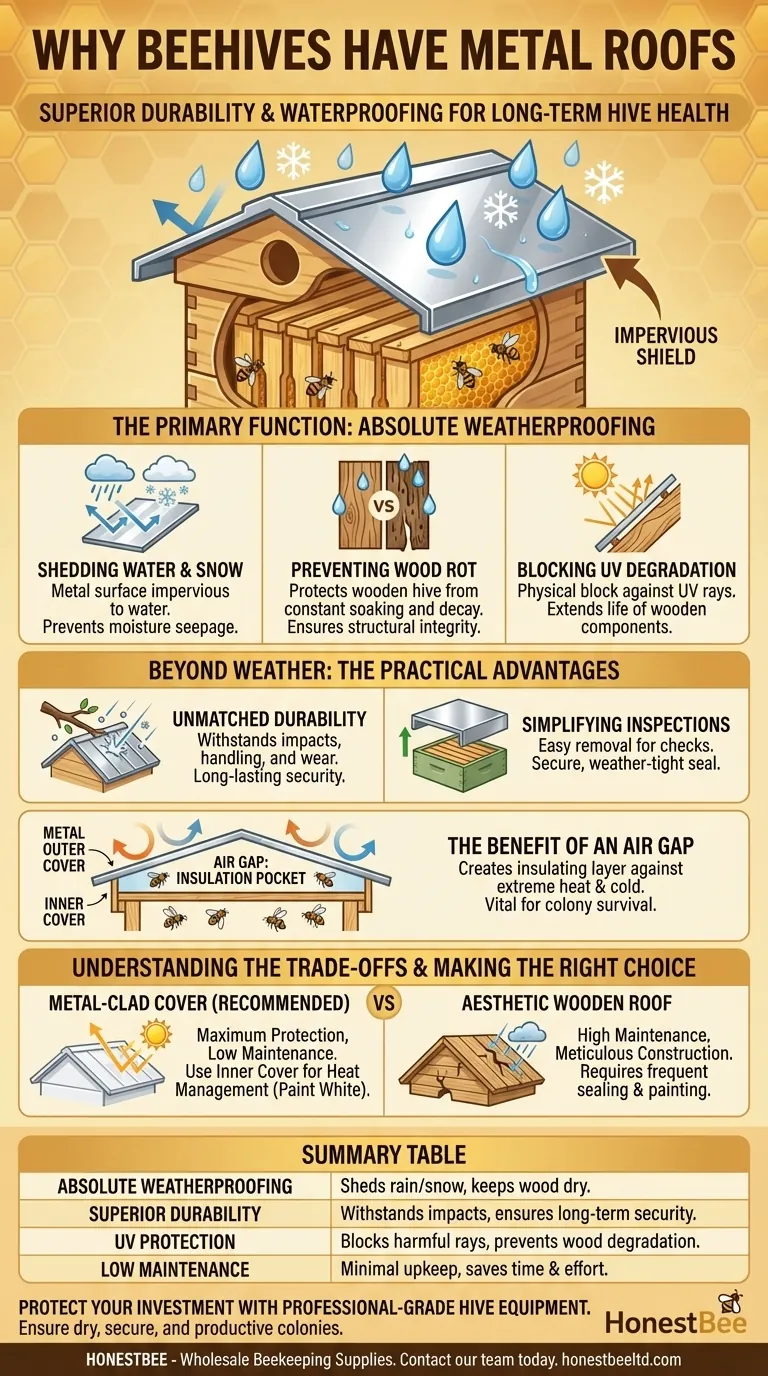
Related Products
- Telescopic Beehive Outer Cover Lid Roof with Galvanised Sheeting for Langstroth Hive and Beehive Outer Cover
- Professional Insulated Winter Hive Wrap for Beekeeping
- Long Langstroth Style Horizontal Top Bar Hive for Wholesale
- Professional Galvanized Hive Strap with Secure Locking Buckle for Beekeeping
- Inner Beehive Cover for Beekeeping Bee Hive Inner Cover
People Also Ask
- How do you install the Langstroth hive roof? A Step-by-Step Guide for a Healthy Colony
- Can bees enter from both sides of the outer cover? Master Seasonal Hive Management
- What is a telescoping outer cover and what are its advantages? Maximize Hive Protection in Harsh Climates
- What is the purpose of a garden hive lid in beekeeping? Essential Protection for Your Colony's Health
- What is the function of the top cover in a Langstroth hive? Master Hive Protection & Climate Control






